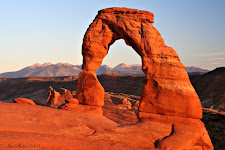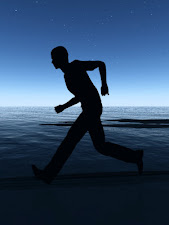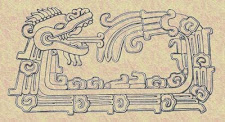So if you ever happen to find yourself skimming through the troposphere high above the Horn of Africa, the engines of your cargo jet clawing at the currents of sub-Saharan air rolling off the lip of the Ethiopian plateau and down toward the Red Sea, there will come a moment when you'll have to admit that the cockpit of an aging DC-8 with a broken oil-pressure gauge and a washed-out picture of a Ugandan mountain gorilla emblazoned on the tail offers a damn fine view of the most wretched place on the planet.
Off to the right, down along the borderlands extending out toward the very easternmost tip of Africa, stretch the desolate coastal plains that the British used to call the Furthest Shag of the Never-Never Land, and that the Somali camel herders and half-starved bands of refugees refer to as the Guban, which simply means "burnt." Off to the left, up against the back end of Eritrea, lurks the Danakil Depression, a salt-encrusted sore on a wrinkled fold of the earth's hide. The Danakil boasts the lowest point on the continent (more than five hundred feet below sea level) and summer temperatures that frequently hit 120 degrees. Jagged shards of volcanic rock stab through the skin of this land like giant, shattered ribs.
You won't have long to contemplate this bonescape, though, and that's because this is only a twenty-minute flight. So ten minutes after the wheels have lifted from the dusty Ethiopian town of Dire Dawa, your crew of five -- a Nigerian captain and a Nigerian loadmaster, a Rwandan copilot, a Congolese purser, and Vincent, your Rhode Island-based Nigerian navigator -- will already be making preparations to touch down at the far edge of what L.M. Nesbitt, the British explorer who conducted the first successful traverse of the Danakil in 1927, fittingly christened the "hellhole of Creation."
In fact, there it is now.
Huddling on the southwest corner of the Bab el-Mandeb, or Gate of Tears, the strait separating Africa from the coast of Yemen, sits the tiny nation of Djibouti: horrific climate, endless sand, almost no fresh water, but a strategic cynosure of the first order. Nearly three million barrels of oil pass by this place every day. It also plays host to about fifteen hundred U.S. troops at Camp Lemonier, a former French Foreign Legion post that is now America's sub-Saharan spearhead in the global war on terror. This explains the HC-130 turboprop jets and attack helicopters lining the tarmac of Ambouli Airport -- a vaguely unsettling sight, given your payload.
Stacked on the deck of the fuselage on the other side of a thick metal door just behind Vincent's navigation desk sits a mountain of white bags, each the size of a stuffed pillowcase. This is the afternoon's shipment of khat, a psychotropic shrub that provides the overwhelming majority of Djiboutian men with their daily drug fix. Which means that having just vaulted over the Furthest Shag of the Never Whatever, you're seconds away from landing next to a war base bristling with irritable jarheads, accompanied by twenty-two thousand pounds of a Schedule 1 amphetamine that, back in the U.S., carries the same penalties for large-scale trafficking -- up to life in prison -- as heroin, meth, or cocaine.
Why, yes. And damned if it isn't unfolding on the tarmac right now, where a mob of ragged-looking dudes wearing sarongs is sprinting across the runway toward the plane. The good news is that these men seem to be unarmed. The bad news is that they look really pissed off.
Read Full Aritcle


















.jpg)





No comments:
Post a Comment